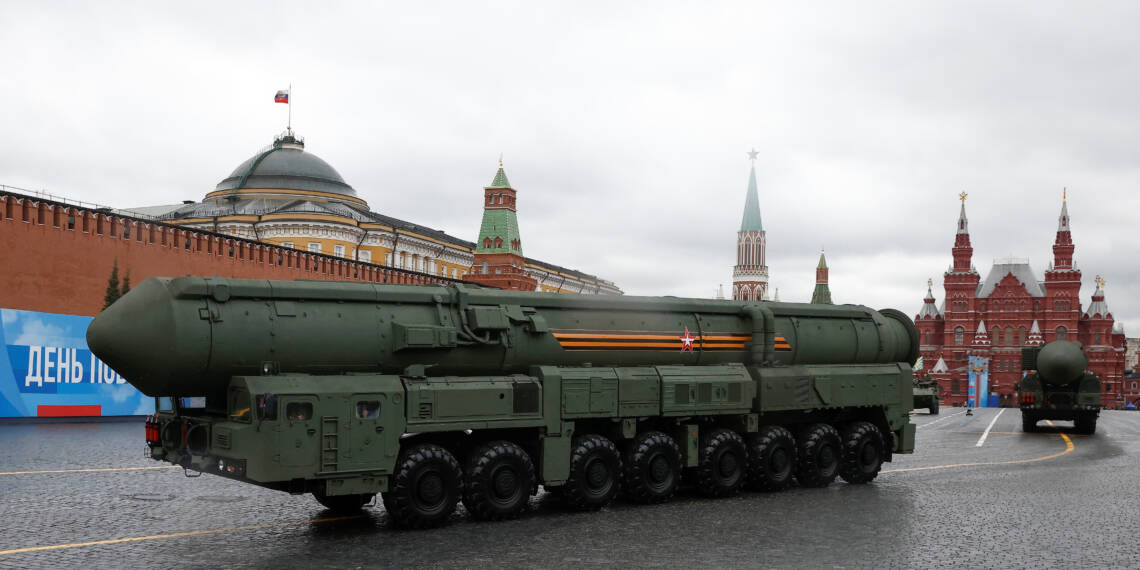On April 12, 2024, the Russian Strategic Missile Forces conducted a test launch of an intercontinental ballistic missile (ICBM) from the Kapustin Yar testing site located in the Astrakhan region. The missile reached the Sary Shagan testing ground in Kazakhstan, approximately 1,600 kilometers to the east. The specific model of the ICBM was not disclosed by the Russian authorities. The Russian Ministry of Defense described the event as a test of a “perspective missile system” and stated it aimed to verify the reliability of current missile systems. The test was declared successful by both Russian and international military analysts.
Reports from various Western sources speculated that the missile might be the 15Zh55ME “Topol-ME/Yars-E.” This hypothesis is based partly on the unusual maneuvering capabilities observed during the flight, which are characteristic of advanced Russian missile technology, starting with the “Topol” series. These capabilities are unique to Russian designs, allowing for significant vectoring during flight, which complicates interception efforts.
The typical launch site for full-scale ICBM tests by Russia is the Kura testing range in Kamchatka, due to its greater distance which is more representative of an ICBM’s range capabilities. The use of the Sary Shagan site for this test suggests potential differences from standard ICBMs, either in range or design, which remains speculative without further details from official sources.
The missile’s capabilities highlight advancements in Russian missile technologies, exemplified by the RS-24 “Yars,” a modernized component of Russia’s strategic arsenal. The RS-26 “Rubezh,” a derivative of the “Yars” with one stage removed, saw its deployment paused in March 2018 as focus shifted to the “Avangard” hypersonic glide vehicle. Changes in international treaties, such as the U.S. exiting the Intermediate-Range Nuclear Forces Treaty in 2019, alongside ongoing military operations, have influenced Russian strategic military planning, potentially hastening the reintroduction of the RS-26 or similar technologies to meet evolving needs.
Officially an intercontinental ballistic missile (ICBM), the RS-26 “Rubezh” operates more typically as an intermediate-range ballistic missile (IRBM) due to its utilization at shorter ranges than its maximum capability. Initially tested in 2012 from the Plesetsk Cosmodrome to the Kura test site, a journey of about 5,800 km, the RS-26 has since predominantly been tested over shorter distances, such as from Kapustin Yar to Sary Shagan. Despite being designed for greater ranges, its frequent deployment at distances characteristic of IRBMs aligns it with NATO’s classification of the missile for similar operational roles.
Since 2018, details regarding the “Rubezh” have been sparse, leading to its characterization as a “black project.” Despite the apparent secrecy, developments around this missile suggest ongoing and significant activities. These activities are contextualized by increasing tensions in Europe and adjacent regions, where the geopolitical maneuvers by the United States and its allies necessitate a robust and flexible strategic response from Russia. The RS-26’s capability to carry multiple independently targetable reentry vehicles (MIRVs) provides the Russian Strategic Missile Forces with a potent tool for deterrence and response over intermediate distances, enhanced by its advanced maneuverability which challenges current anti-ballistic missile (ABM) defenses.
The design and engineering of the RS-26 incorporate advanced maneuvering capabilities that disrupt traditional ABM strategies. Standard ABM defenses rely on predicting the trajectory of incoming missiles to intercept them effectively. However, the ability of the RS-26 to alter its flight path and exhibit behaviors such as wobbling—which in conventional missile technology usually indicates a malfunction—renders these predictions less accurate and interception attempts futile. This characteristic, derived from the RS-24 “Yars” model, positions the RS-26 uniquely within Russian missile technology, emphasizing its strategic role as a countermeasure to ABM systems, particularly those deployed by NATO.
The recent tests of the RS-26 convey a clear strategic message to Western military alliances, particularly in light of escalating tensions in Europe and the Middle East. These tests are likely indicative of Russia’s readiness to respond to potential escalations in these regions, including the ongoing complexities involving Iran and its retaliatory dynamics in the Middle East. By demonstrating the capabilities of the “Rubezh,” Russia signals its ability to undermine the efficacy of NATO’s ABM systems and asserts its geopolitical stance, aiming to moderate the actions of NATO members and stabilize its strategic peripheries.








